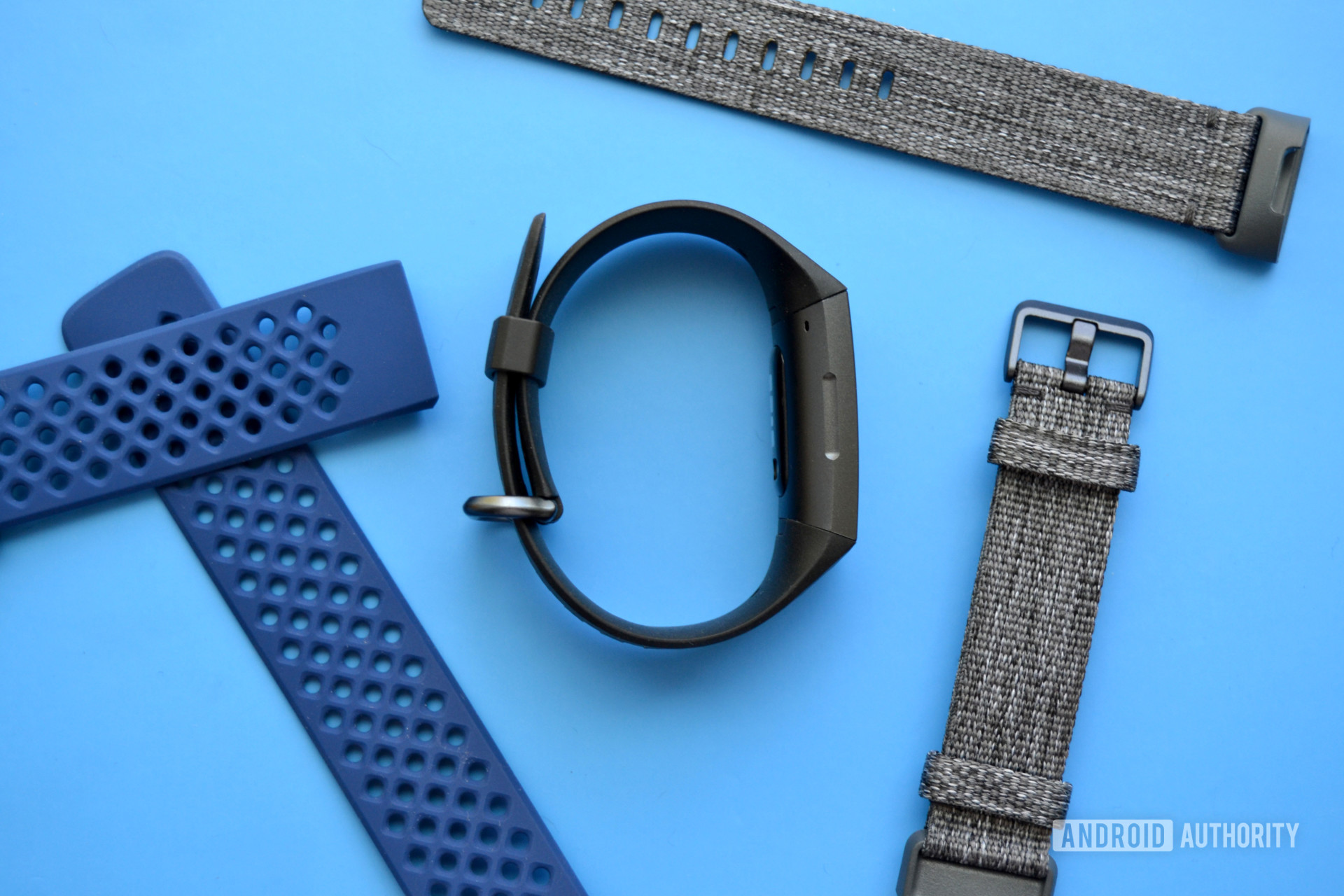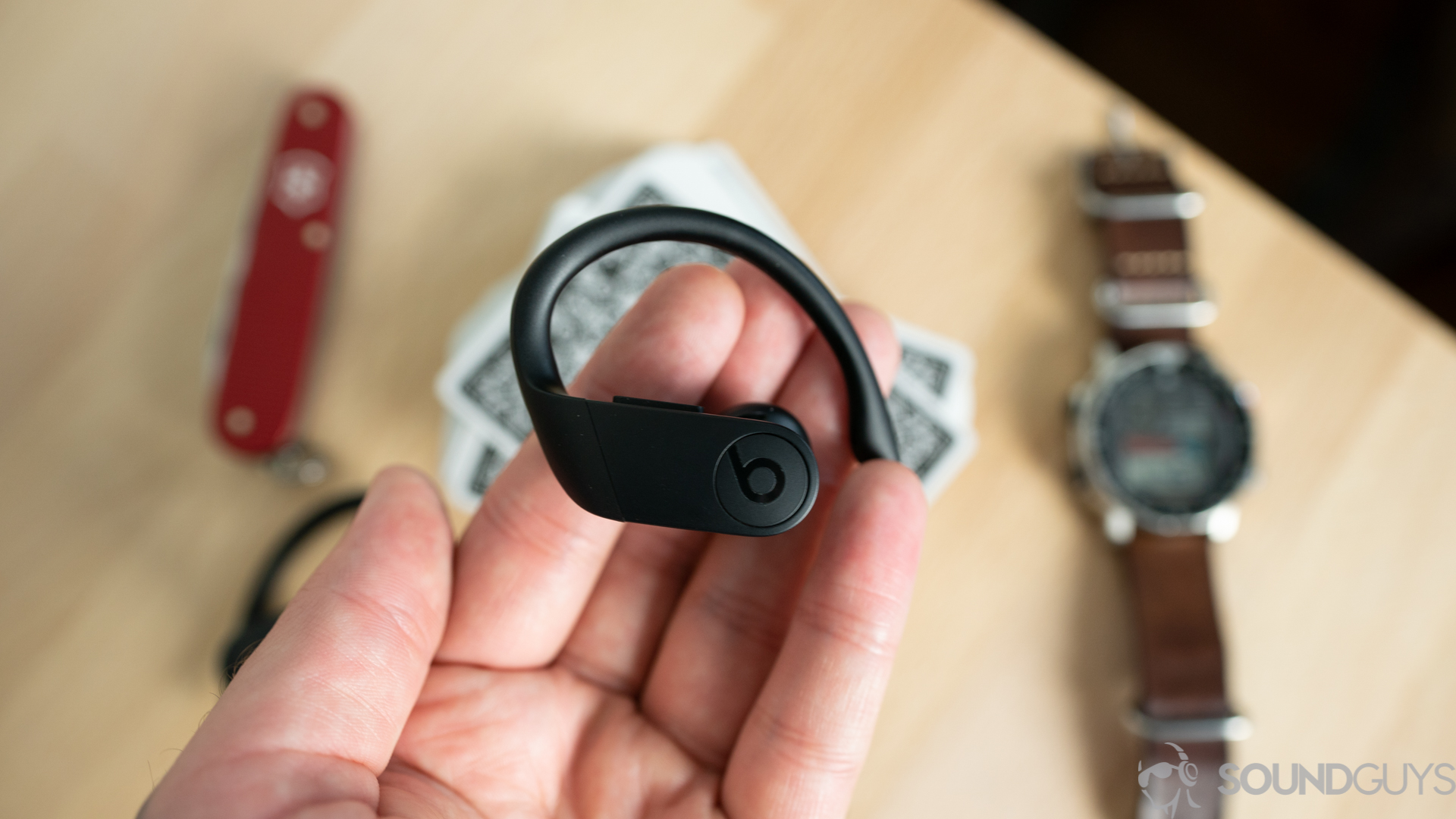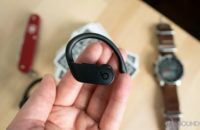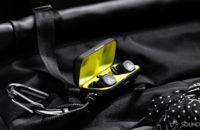Whether you're into hiking, biking, photography, or drone piloting — getting started and making the right equipment decisions can be a serious investment. But sometimes it's hard to know where to get started, especially if you're new to the hobby. That's were AA Essentials comes in. This new Android Authority series features different experts from our team who discuss their recommendations for the gear you need to optimize your experience.
Running is one of the easiest sports to get into. Many people already own a pair of workout shorts and gym shoes, and you don't really need to buy any extra equipment to get started. Just strap on your shoes, head outside, and run to your heart's content.
Of course, there's more to it than that, and there are plenty of gear upgrades you can use to improve your performance. That's why we've rounded up some of the best running gear you can buy, including GPS running watches, fitness trackers, shoes, clothing, and accessories.
A bit about me: I'm by no means a running expert, but I love to run. I'm one of those people who needs to run to clear their head every couple of days otherwise they get antsy. I ran my very first half marathon in August and I can't wait to run my next one. I spend a fair amount of time on the treadmill at the gym, and outside on the bike path during the summer. I'm hoping I can steer you in the right direction when it comes to buying your own running gear.
Note: We'll update this best running gear list as new products are announced.
GPS running watches
If you're all-in on running and want the most data possible, you need a good GPS running watch. These watches often aren't the most comfortable to wear, but they'll give you all the data you want and then some. You'll get distance, pace, and cadence metrics from most of these options thanks to their built-in GPS sensors, plus heart rate data, pulse oximeter readings, and more.
Here are our favorite GPS running watches you can buy:
- Garmin Forerunner 245, 645, and 945 (Amazon): If you're a runner, look no further than the Garmin Forerunner lineup. Depending on your budget, the Forerunner 245, 645, or 945 will have something that suits your needs.
- Garmin Venu and Vivoactive 4 (Amazon: Venu, Vivoactive 4): The Garmin Venu is the company's first AMOLED display smartwatch, while the Vivoactive 4 is essentially the same thing only with Garmin's traditional MIP display. They're both fantastic multisport running watches.
- Suunto 9 and 5 (Amazon: Suunto 9 and 5): Both the Suunto 9 and Suunto 5 will track over 80 different sport modes. If you're looking for the best Suunto has to offer, the Suunto 9 is the watch for you. It has three battery modes which Suunto says will get you anywhere between 25 to 120 hours of GPS tracking, making this a great fit for ultra runners. The Suunto 5 is less expensive and has many of the same features as the Suunto 9 line, but comes with shorter battery life, no altimeter or compass, and it's not a touchscreen watch.
- Polar Vantage V Titan (Amazon): The Vantage V Titan is the best GPS running watch from Polar. It features running power data right on the wrist, making it the first wrist-based device on the market that can offer running power analysis. Other solutions require you to use an external device like a dedicated chest strap or a foot pod sensor.
- Apple Watch Series 5 (Amazon): The Apple Watch might not be the first device many would consider for a GPS running watch, but it's a fantastic overall smartwatch with a built-in GPS. Apple is also very focused on health and wellness, so the Series 5 will continue to receive big feature updates throughout its lifetime.
More posts about smartwatches
Fitness trackers
If for some reason you don't want a GPS running watch (some people can't get used to the size), you'll want to consider purchasing a fitness tracker with GPS capabilities. There aren't actually many fitness band-style devices on the market with a built-in GPS sensor. The next best thing is connected GPS. Connected GPS means your tracker can piggyback off of your phone's GPS sensor. You'll get accurate pace, distance, and cadence metrics this way, but you'll need to carry your phone with you on your run.
Here are some of the best fitness trackers with GPS and connected GPS capabilities:
- Fitbit Charge 3 (Amazon): The Fitbit Charge 3 is our favorite fitness band at the moment, and it has connected GPS. It's customizable, pretty cheap, and has a fair amount of smartwatch features built in.
- Fitbit Versa 2 (Amazon): I know this is more of a smartwatch, but it's really not that big! It has all the capabilities as the Charge 3 and then some. Plus, it has connected GPS.
- Garmin Vivosmart 4 (Amazon): The Vivosmart 4 is Garmin's latest activity tracker. It's small, has a much improved display over its predecessor, and it has a built-in pulse oximeter. Recently, Garmin rolled out connected GPS functionality to it, too.
- Fitbit Inspire HR (Amazon): The Fitbit Inspire HR have taken the place of the Alta series in Fitbit's lineup. The Inspire HR is smaller than the Charge 3 and has fewer features and a worse display, but makes up for those things with a decent spec sheet.
- Samsung Galaxy Fit (Amazon): If you're more a fan of Samsung fitness trackers, the Samsung Galaxy Fit will be right up your alley. It has a great AMOLED display, compact design, and week-long battery life. The Samsung Health app is also full of great fitness features, too, and the tracker has connected GPS.
- Xiaomi Mi Band 4 (Amazon): Xiaomi's fitness trackers are popular because they're good and cheap. In terms of fitness features and accuracy, the ~$40 Xiaomi Mi Band 4 rivals the likes of the more expensive Fitbit Inspire HR and Samsung Galaxy Fit. It'll track most of the same activity metrics as the other devices and even has nearly three-week battery life.
- Garmin Vivosport (Amazon): The Garmin Vivosport is a few years old at this point, but it's the company's most powerful fitness tracker. It has a built-in GPS and heart rate sensor, and it's accurate, water resistant, and pretty cheap because it's been on the market since 2017.
More posts about fitness trackers
Workout earbuds
If you're a long-distance runner, you're probably well aware that all those miles can get tedious. Thus, a great pair of workout earbuds is essential. A few of our favorites can be found below:
- Jaybird Tarah (Amazon): While not completely wireless, the Jaybird Tarah are our favorite overall workout earbuds. They have a decent water resistance rating, good playback controls, and they're less expensive than the Jaybird X4s.
- JLab JBuds Air (Amazon): The JLab JBuds Air aren't the most comfortable or all-around best option here, but they are some of the cheapest true wireless options out there. I personally use these, and I love 'em. They rarely drop connection, and they sound good.
- Jabra Elite Active 45e (Amazon): The Elite Active 45e from Jabra are overall a good pair of workout earbuds if you want a hook design without paying Apple prices (see below).
- Beats PowerBeats Pro (Amazon): They're pricey and don't have the best isolation, but the PowerBeats Pro have great overall sound quality, a steady Bluetooth 5.0 connection, and offer a secure fit.
More posts about earbuds
Heart rate chest straps
Wrist-based heart rate sensors do their best to track things accurately, but they're never going to be as accurate as heart rate chest straps. If you'd like to prioritize heart rate accuracy over everything else, consider one of the following chest straps:
- Polar H10 (Amazon): The Polar H10 uses an entirely new algorithm from previous Polar monitors, and the included Polar Pro strap has been updated as well. It includes extra interference-preventing electrodes to help make sure heart rate data is accurately captured. It also sports a new buckle mechanism and silicon dots that will help keep it in place when you're working out. It can also receive OTA software updates, unlike its predecessor.
- Garmin HRM-Tri (Amazon): If you're a triathlete, you should consider the HRM-Tri. This is Garmin's smallest and lightest heart rate sensors to date, and it's super comfortable to wear for an extended period of time. The HRM-Tri will store all your heart rate data when you're underwater, then forward it to your wearable once you're done swimming. And when you're out for a run, the monitor will report six different running dynamics metrics, including cadence, stride length, ground contact time, ground contact time balance, vertical oscillation, and vertical ratio.
- Wahoo Tickr X (Amazon): The Wahoo Tickr X tracks your heart rate (duh), calories burned, reps, running analytics, and much more. It also has quite a bit more on-board storage capacity than the Polar H10. You'll be able to store up to 16 hours of fitness data on this monitor and sync back up with your phone at a later time. The Tickr X can connect to most smartphones, GPS watches, and bike computers, as it also comes equipped with Bluetooth Smart and ANT+ dual-band technology.
Best running gear beyond technology
Of course, running is a physical sport and requires the right gear. The shoes, socks, shirts, shorts, and accessories you buy are all important and can greatly affect your performance, so you'll want to do some research before you buy new running gear.
Shoes are probably the most important piece of gear a runner can own; they need to fit correctly, provide enough cushion, have the right drop for your running style, provide enough breathability, and they need to be able to hold up over time. There are tons of different styles of running shoes out there so your mileage will most definitely vary, but our favorites are the Brooks Ghost 12. They're not overly expensive, they're comfortable, breathable, and provide enough versatility for most types of runners. They may not be your go-to racing shoe, but they're one of the best all-around running shoes out there. A good alternative would be the Hoka Rincon, which are cheaper and lighter than the Ghost 12s and might be better suited for speed work.
Don't underestimate socks, either! Sure, you can wear your everyday cotton socks during that 5K, but they'll hold way more moisture than socks made specifically for running. Wearing cotton socks while running can cause blisters, so you'll want to look for any performance sock made from synthetic materials like nylon or polyester. Personally, I'm a big fan of Saucony's no-show socks (they're cheap!), but the Balega Silver Antimicrobial running socks are runner favorites due to their ability to remain stink-free. Smartwool's PhD cold weather socks are also a great option for chilly outdoor runs.

With running shorts, you want something light and comfortable enough that won't distract you from performing well, but also something that's versatile and will hold up for the long haul. And you should definitely stay away from cotton. Some of the best running shorts you can buy are made by Rabbit: Daisy Dukes 2.0 or FKT 5-inch. Both models come with pockets big enough to fit a phone, plus a few additional "trash" pockets. Also, running shorts from Janji, Tracksmith, and Myles seem to be quite popular.
Remember one thing: Don't run in cotton. Ever.
Keep a similar mindset when buying running shirts; you don't want something that gets in your way while you're putting in the miles. You also need to look for something breathable if you're outside in the summer or lightweight and warm if you're running in the winter. Again, Rabbit should be one of your first stops to find decent running shirts. Saucony, Asics, Under Armour, FourLaps, or any other major running apparel brand will likely offer what you need.
Odds are, most people will be running in the complementary shirts they received from their 5K or marathon completion, so you may already have a pile of exercise shirts stuffed in your drawer.
If you're strictly an outdoor runner and refuse to step on that treadmill in the winter (I don't know how you do it), you'll want to invest in a few winter running accessories to keep you from getting frostbit. Running stocking caps, running gloves, and running tights are all must-haves.
The best running gear you don't need, but could come in handy

What do you really need to run? Decent shoes? Some well-fitting clothes? That's about it. But you could always have more, right? Things like running gels, fanny packs, and running hats are by no means required, but they all serve their purposes and can help you improve your performance. Here's some of the optional best running gear you might want to consider.
- Running gels: Once you start getting your mileage up a bit, you'll want to take some running gels with you to ensure you make it to the finish line. Replenishing carbs and electrolytes is crucial to running further distances, and running gels are the easiest way to do so. Some popular options include Spring gels and PowerBar PowerGel Shots.
- Running hats: I bought the Adidas Superlite cap a year ago and I've never looked back. Running caps keep the sun and sweat out of your eyes so you can spend more time focusing on what's important. Other great options include the Adidas Superlite Prime cap and Patagonia Airdini cap.
- Running fanny pack/running belt: I run with a running fanny pack every time I go out for a long run. Personally I use the Sport2People Running Belt to keep my chapstick and some gels with me, though I know it's not the best one you can buy. Many runners prefer the Nathan Zipster belt or SPIbelt running belt for a cheaper option.
- Running hydration belts: This one isn't necessary if you're around drinking fountains, but some people need quick access to water at all times. Running hydration belts are designed to keep a spare few bottles of water or sports drink safe and secure on your belt, allowing you to continue on without taking a pitstop. We'd recommend either the Ultimate Direction Ultra Belt 4.0 or the Nathan VaporKrar Hydration Belt.
- You'll also want to pick up some running water bottles while you're at it.
- Foam rollers: If you're sore after a run and need to get some knots out, a foam roller can be a lifesaver. Really any foam roller can do the trick. Personally I use the TriggerPoint Grid Mini foam roller and the 36-inch LuxFit foam roller.
- Headlamps: Running headlamps are a must-have if you run at night. It's important to stay safe after dark! A few good options include the Foxelli headlamp or the Lighting Ever LED headlamp for a cheaper option.
So that's it — AA's guide to some of the best running gear you can find. Have any other recommendations for me? Let me know in the comments.
More posts about running and fitness
from Android Authority https://ift.tt/2Mh02Tf
via IFTTT

































Aucun commentaire:
Enregistrer un commentaire